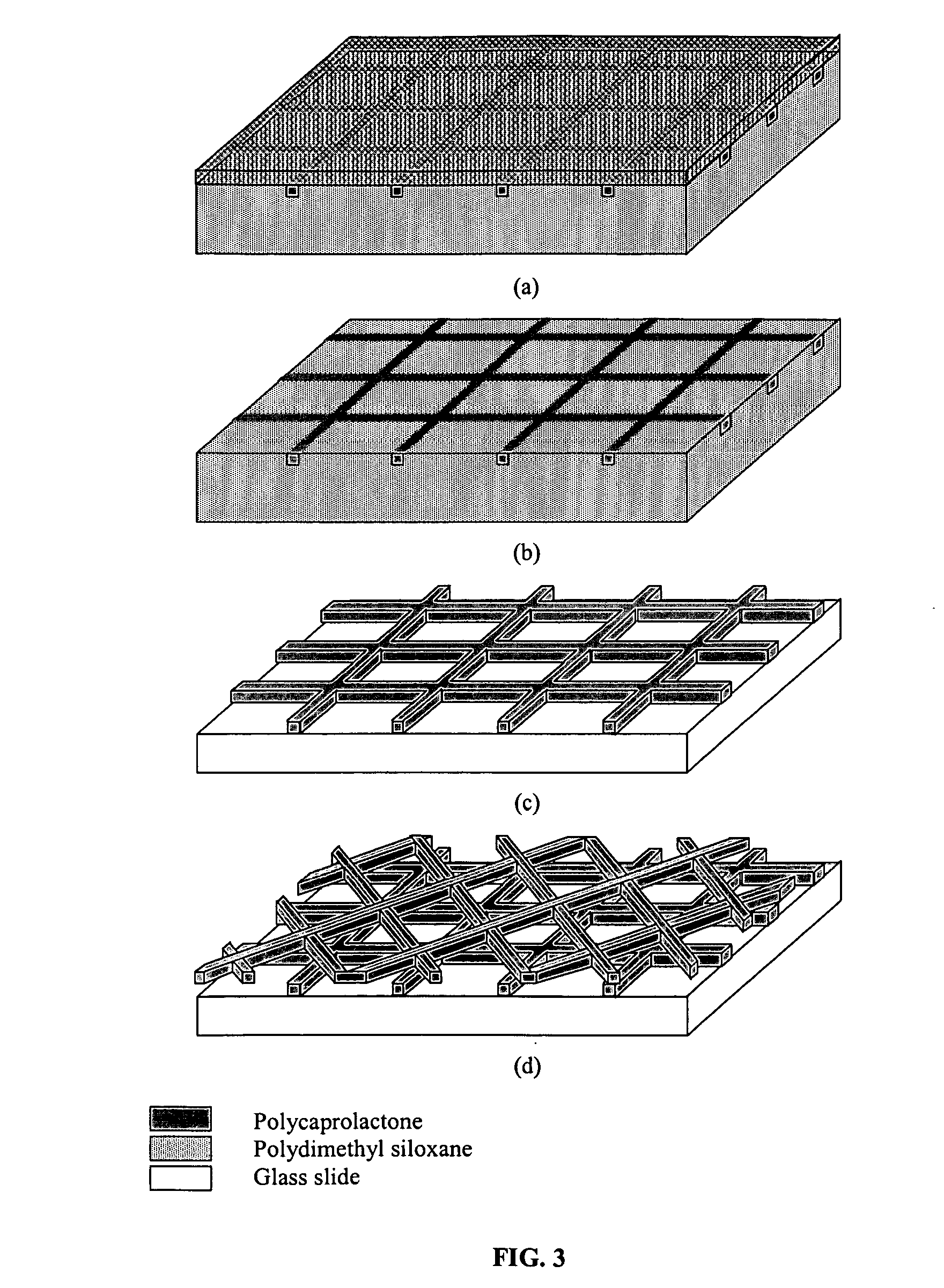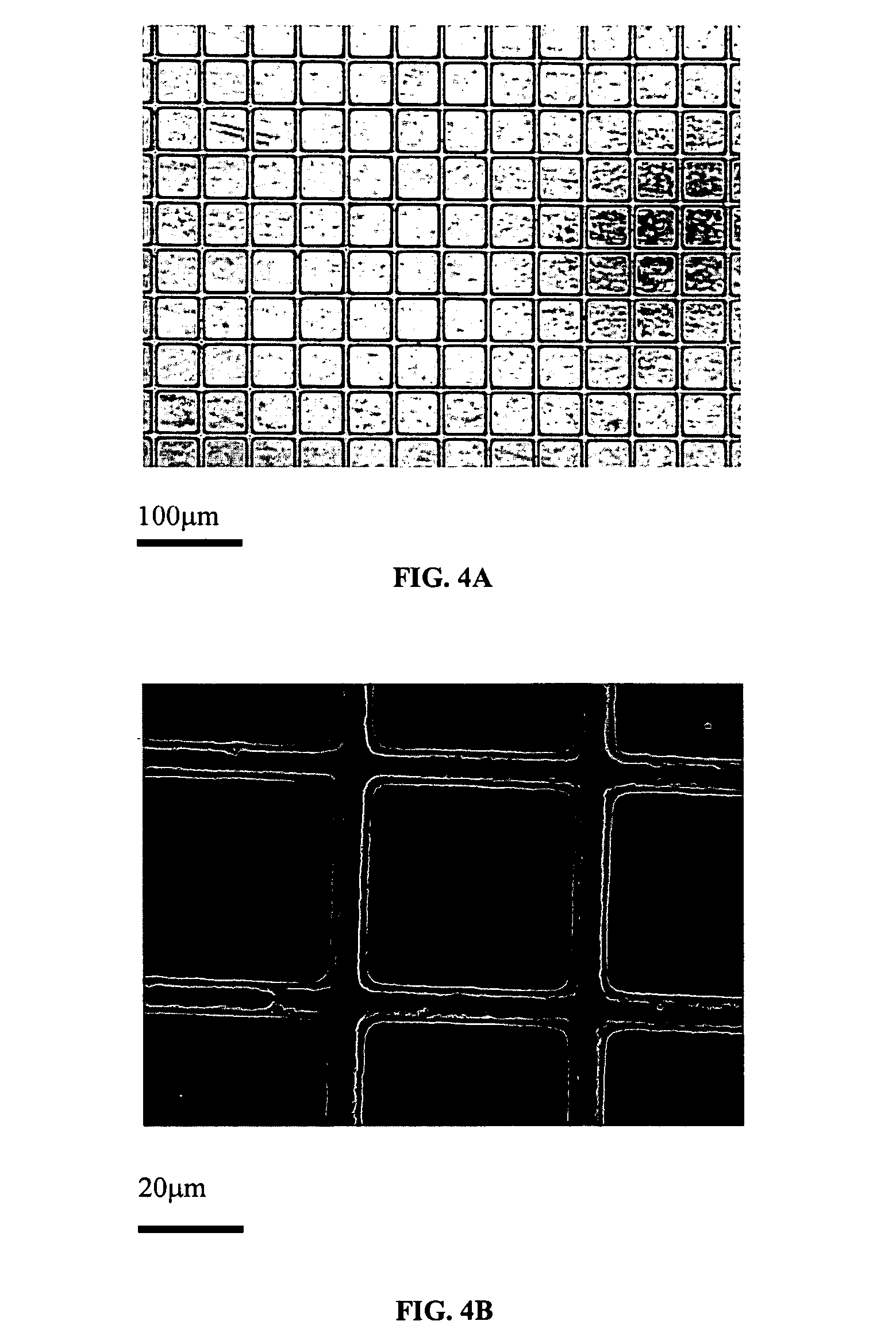Multi-layer polymer scaffolds
a polymer scaffold and multi-layer technology, applied in the field of polymer scaffolds, can solve the problems of difficult to overcome the precise control of the geometry of the microstructure, the inability to precisely replace the tissue, and the size of the three-dimensional scaffold with the feature of 50-100 m or even several hundred microns is typically limited in usefulness
- Summary
- Abstract
- Description
- Claims
- Application Information
AI Technical Summary
Benefits of technology
Problems solved by technology
Method used
Image
Examples
example
Preparation of Polymer Solution
[0026] Polycaprolactone (PCL) pellets (Aldrich Chemical, Wis.) with an average Mn of ca. 80,000 (GPC) and a melting point of 60° C. (DSC) were used for the fabrication of scaffolds. A PCL solution was developed to fully wet the polydimethylsiloxane (PDMS) mold. At room temperature, PCL was dissolved in tetrahydrofuran (THF) (Mallinckrodt Baker, Inc. NJ) in a 1:3 ratio by weight. The mixture was left overnight until all of the polymer pellets were fully dissolved and the final solution was clear and transparent. Next, Dimethyl Sulfoxide (DMSO) (Sigma-Aldrich, Wis.) was added into the polymer solution in a weight ratio of 3:2. The mixture was stirred thoroughly and resulted in a clear solution. Incorporation of DMSO allowed the polymer solution to wet the hydrophobic PDMS surface and thus be delivered into the small grid features within the PDMS. The double solvent solution was employed since PCL was not soluble with DMSO, so THF was used to first disso...
PUM
| Property | Measurement | Unit |
|---|---|---|
| thick | aaaaa | aaaaa |
| surface area | aaaaa | aaaaa |
| sizes | aaaaa | aaaaa |
Abstract
Description
Claims
Application Information
 Login to View More
Login to View More - R&D
- Intellectual Property
- Life Sciences
- Materials
- Tech Scout
- Unparalleled Data Quality
- Higher Quality Content
- 60% Fewer Hallucinations
Browse by: Latest US Patents, China's latest patents, Technical Efficacy Thesaurus, Application Domain, Technology Topic, Popular Technical Reports.
© 2025 PatSnap. All rights reserved.Legal|Privacy policy|Modern Slavery Act Transparency Statement|Sitemap|About US| Contact US: help@patsnap.com



